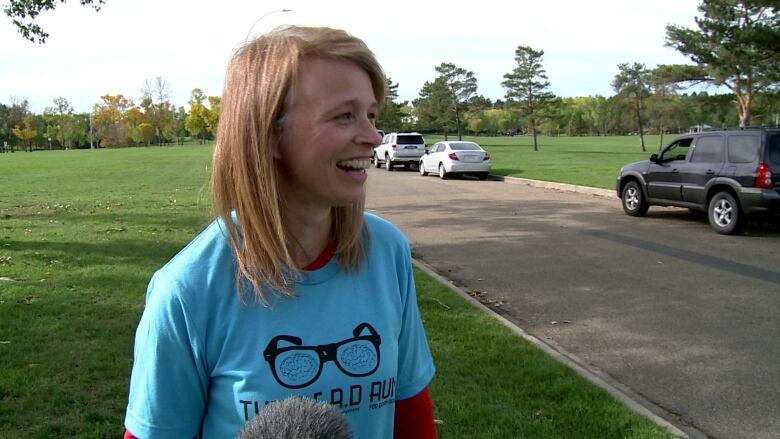Robotic exoskeleton helping Denny Ross find his footing once again
A 2010 car crash robbed him of the ability to walk, now new technology is helping get it back
Five years ago, lying in a hospital bed, Denny Ross was told he'dlikely never take another step.
A car crash hadbroken Ross' back, leaving him paralyzed.
On Saturday, the 35-year-old didn't just take a single step. He walked with the help of a robotic exoskelton.
"It's a huge step, Idon't know it's been an amazing journey from the start to where we are now," Ross told CBC News.
"I mean the whole thing is just incredible."
Ross has been testing the Rewalk exoskeleton for the past 18 months, part of a study run out of the University of Alberta.
He first became involved with the project after meeting with physical therapist Donna Livingstone. Ross asked if there was anything he could do to help others dealing with similar injuries.

"There's lots of times where we tried things and they didn't go so well. And most of it has been pretty fun. He's so much fun to be around," she said.
When turned on, a tilt sensor in the exoskelton detects whenever Ross leans forward. That tells the machine that he's ready to walk. Motors push Ross's leg forward, allowing him to take a step.
He uses a set of crutches to help him keep his balance and also to adjust for inclines.
"It's a lot of work to go uphill. I have to force myself to lean into it and to lean forward," he said.
Ross and Livingstone have been training with the exoskeleton every week since the study began.
While most of that time has been in private, the technology was on public display Saturday as Ross took part in the NERD Run. The fun run serves as a fundraiser for the university's NeuroScience and Mental Health Facility.
Among the crowd were Ross' family, who saw Ross walk for the first time.
"It's really exciting, just to see him up and walking around that's a miracle," said his mother, Sue Ross.
In the end, Ross' spirit outlasted the technology. Technical problems with the exoskeleton stopped him from his goal of walking a full kilometre, although he did finish the route by wheelchair.
Now, he's just all the more determined to walk the entire distance during next year's run.
"It was just as amazing doing this now as it was taking the first step."













_(720p).jpg)


 OFFICIAL HD MUSIC VIDEO.jpg)
.jpg)



























































































